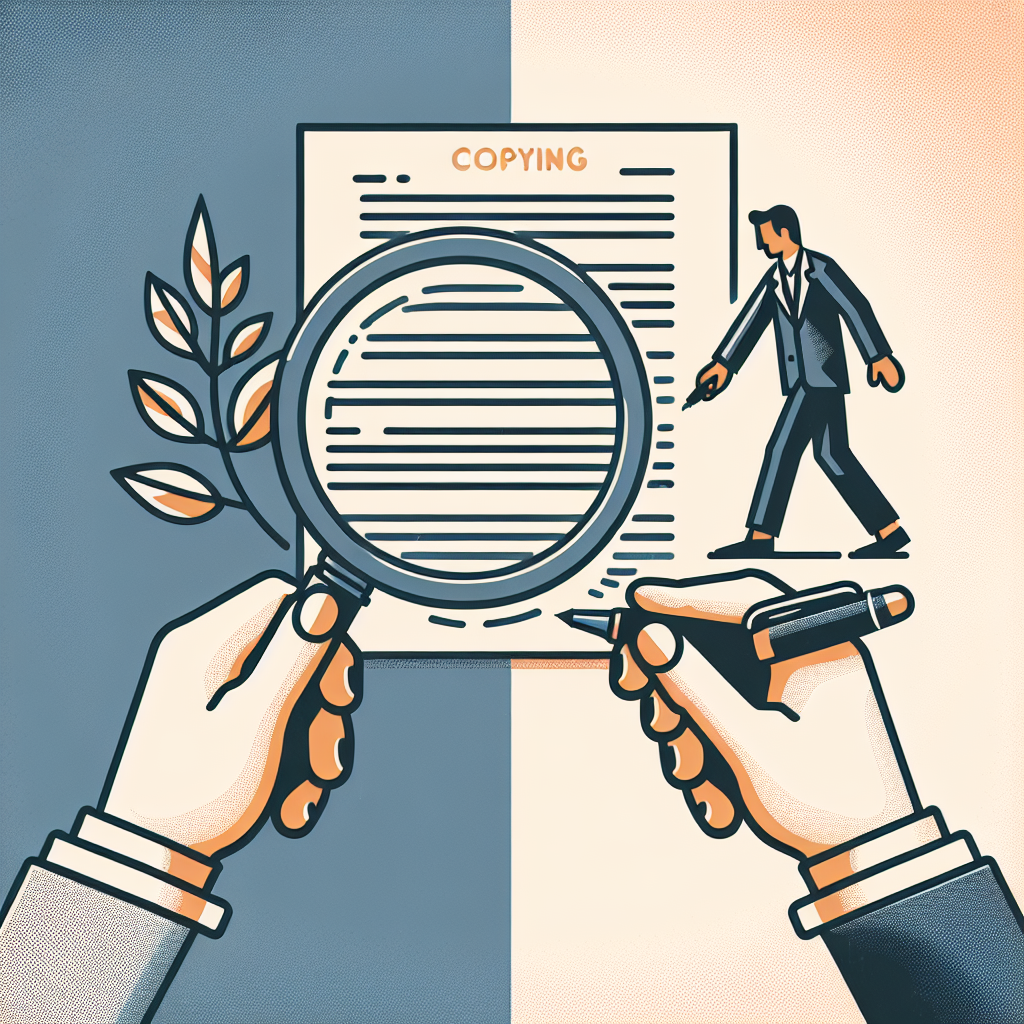In today’s digital age, the issue of plagiarism has become a significant concern for bloggers. Ensuring that your content remains original not only protects your intellectual property but also helps in building credibility and trust with your readers. In this article, we will delve into the various strategies to handle plagiarism on your blog effectively.
Understanding Plagiarism
Plagiarism is the act of using someone else’s work or ideas without proper acknowledgment. This can be detrimental to a blog’s reputation and can have legal implications. Distinguishing between intentional and unintentional plagiarism is crucial:
| Type of Plagiarism | Description |
|---|---|
| Intentional | Deliberate copying of another’s work without permission. |
| Unintentional | Accidental failure to credit the source properly. |
Why is Plagiarism a Problem?
The significance of addressing plagiarism cannot be overstated. Here are a few reasons why it is a major issue:
- Legal Ramifications: Plagiarism can lead to lawsuits and fines.
- Damage to Reputation: Being caught plagiarizing can ruin a blogger’s credibility.
- SEO Penalties: Search engines like Google penalize duplicate content, which affects site rankings.
How to Detect Plagiarism
Detecting plagiarism is the first step in tackling it. Here are some tools and methods to identify copied content:
Online Plagiarism Checkers
Using dedicated plagiarism detection tools can help identify and address copied content:
- Copyscape: A popular tool for detecting duplicate content on the web.
- Grammarly: Offers a plagiarism detection feature along with grammar checking.
- Turnitin: Widely used in academic circles, it is also effective for bloggers.
Manual Checks
Sometimes, a manual review can be more thorough:
- Compare the content with known sources.
- Use specific search queries to locate potential duplicates.
How to Handle Plagiarism
If you discover plagiarism on your blog, take the following steps:
Contact the Offender
Reach out to the person or entity that plagiarized your content. Politely request them to remove the plagiarized material or give proper attribution.
Use a DMCA Takedown Notice
If contacting the offender does not work, you can file a DMCA (Digital Millennium Copyright Act) takedown notice. This legal mechanism compels the hosting provider to remove the infringing content.
Seek Legal Action
In severe cases, taking legal action might be necessary. Consult a lawyer to understand your rights and the best course of action.
How to Prevent Plagiarism
Prevention is better than cure. Here are some effective strategies to prevent plagiarism on your blog:
Create Original Content
Focus on creating unique and original content. This not only helps in avoiding plagiarism but also enhances the value of your blog to your readers.
Use Plagiarism Checkers
Regularly check your content for plagiarism before publishing. This ensures that any unintentional plagiarism is caught early.
Proper Attribution
Always give proper credit to the sources you use. Whether it is a quote, an idea, or a resource, proper attribution is key to avoiding plagiarism.
Showcase Your Copyright
Display a copyright notice prominently on your blog. This informs visitors that your content is protected and deters potential plagiarists.
Educate Your Team
If you work with other writers, ensure that they understand the importance of originality and the implications of plagiarism. Regular training sessions can be helpful.
Using Plagiarism Deterrents
Implementing certain technical methods can also deter plagiarism:
HTML Watermarks
Embedding HTML watermarks in your content can make it easier to identify and trace unauthorized use of your work.
RSS Feed Modifications
Modify your RSS feed to include links back to your original post. This way, even if someone copies your feed, they will have to link back to your blog.
Watermark Images
If you use images in your blog posts, consider watermarking them with your blog’s name or logo.
Conclusion
Handling plagiarism on your blog requires consistent vigilance and proactive measures. By understanding plagiarism, detecting it effectively, addressing it promptly, and implementing preventative strategies, you can safeguard your content and maintain the integrity of your blog. Remember, originality is the cornerstone of credible and successful blogging. Protect your hard work and ensure your blog remains a trusted source of valuable content.

